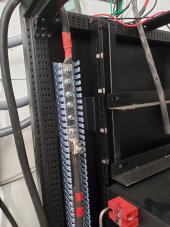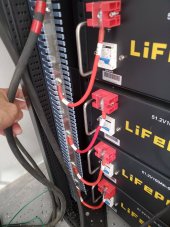John Frum
Tell me your problems
- Joined
- Nov 30, 2019
- Messages
- 15,230
Oops you need 400 amps not 300.
 www.victronenergy.com
www.victronenergy.com
If you want to save a bit of change get one of these
 www.victronenergy.com
www.victronenergy.com
and modify according to this
Don't forget the 400 amp fuse at the battery side of the 4/0 awg feeder.
Lynx Distributor - Victron Energy
Monitor the status of each fuse and see its condition with a LED on the front of the Lynx Distributor. Find a Victron Energy dealer near you.
If you want to save a bit of change get one of these
Lynx Power In - Victron Energy
Connect batteries to the Lynx DC distribution system with the Lynx Power In, a modular DC busbar. Find a dealer nearby.
and modify according to this
Don't forget the 400 amp fuse at the battery side of the 4/0 awg feeder.





